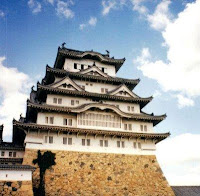Javan rhino population in Ujung Kulon dwindling away
 They want to survive but the nature condition seems less friendly and human behavior in the past were hunting them, according to Ministry of Forestry, during the last 30 years there were only 50 – 60 heads. Unlike the WWF Indonesia observation data using a hidden camera only records a total of 29 Javan rhino (Rhinoceros sondaicus) in Ujung Kulon National Park.
They want to survive but the nature condition seems less friendly and human behavior in the past were hunting them, according to Ministry of Forestry, during the last 30 years there were only 50 – 60 heads. Unlike the WWF Indonesia observation data using a hidden camera only records a total of 29 Javan rhino (Rhinoceros sondaicus) in Ujung Kulon National Park.Besides Javan rhino (badak jawa) as occupants of Ujung Kulon National Park, there are also some 500 Javan bulls (Bos javanicus), leopard (Panthera pardus), gibbon (Hylobates moloch), deer (Cervus timorensis), small antelope (Muntiacus muntjak), lesser mouse-deer (Tragulus javanicus), jelarang (Ratufa bicolor) and ajag (Cuon alpinus).
 Since 1991, national parks and conservation areas along Ujung Kulon (also Krakatau Nature Reserve) on the western tip of Java island designated as a World Natural Heritage Site of UNESCO.
Since 1991, national parks and conservation areas along Ujung Kulon (also Krakatau Nature Reserve) on the western tip of Java island designated as a World Natural Heritage Site of UNESCO.They are shy mammals animals have a keen sense of smell and hearing, be avoided when capturing the human presence. When in the woods, we often come across footprints, droppings, old food as well as the water pool of animals that weigh 900-2300 kg and a length of 2-4 meters and 1.5 meters high.
"They do not want to meet people, always away from where humans are," said a resident who lives in the village of Ujung Jaya on the edge of the park.
 Javan rhino or one-horned rhino is a family member of Rhinocerotidae and one of five rhino family member still there. This species is include into the same genus with Indian rhino and has rhinoceros mosaic skin that resemble armor. Javan rhino has a length of 3.1 to 3.2 m high and 1.4 to 1.7 m. They are smaller than India rhino and more closely in the large body with a black rhino. They horn size is usually less than 20 cm, smaller than the other horn rhino species (wikipedia.org).
Javan rhino or one-horned rhino is a family member of Rhinocerotidae and one of five rhino family member still there. This species is include into the same genus with Indian rhino and has rhinoceros mosaic skin that resemble armor. Javan rhino has a length of 3.1 to 3.2 m high and 1.4 to 1.7 m. They are smaller than India rhino and more closely in the large body with a black rhino. They horn size is usually less than 20 cm, smaller than the other horn rhino species (wikipedia.org).Javan Rhino can live for 30-45 years in the wild lowland rainforest, wet meadows and flood a large area of land.
Government of Indonesia had to work hard to make Javan rhino populations can survive and not disappear into history, conservation efforts seriously and intensively with the fencing program, the program was formed through the project of making the Javan rhino enclosure called the Javan Rhino Study and Conservation Area (JRSCA) starting June 20, 2011.
All parties will certainly support that Javan rhino populations can continue to coexist with humans in there, people who live around the park are willing to sacrifice some of their land used for fencing projects. Hopefully Javan rhino stay with us.
------------------------------------------
(Sources Kompas and other various source /Images CC, Uyun Sanwani and WWF TNUK)


Comments
Post a Comment